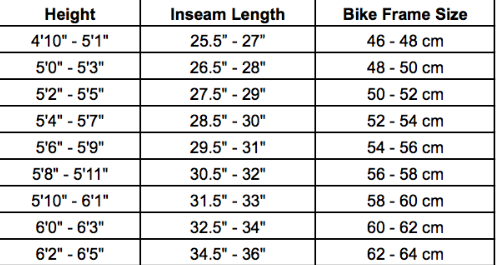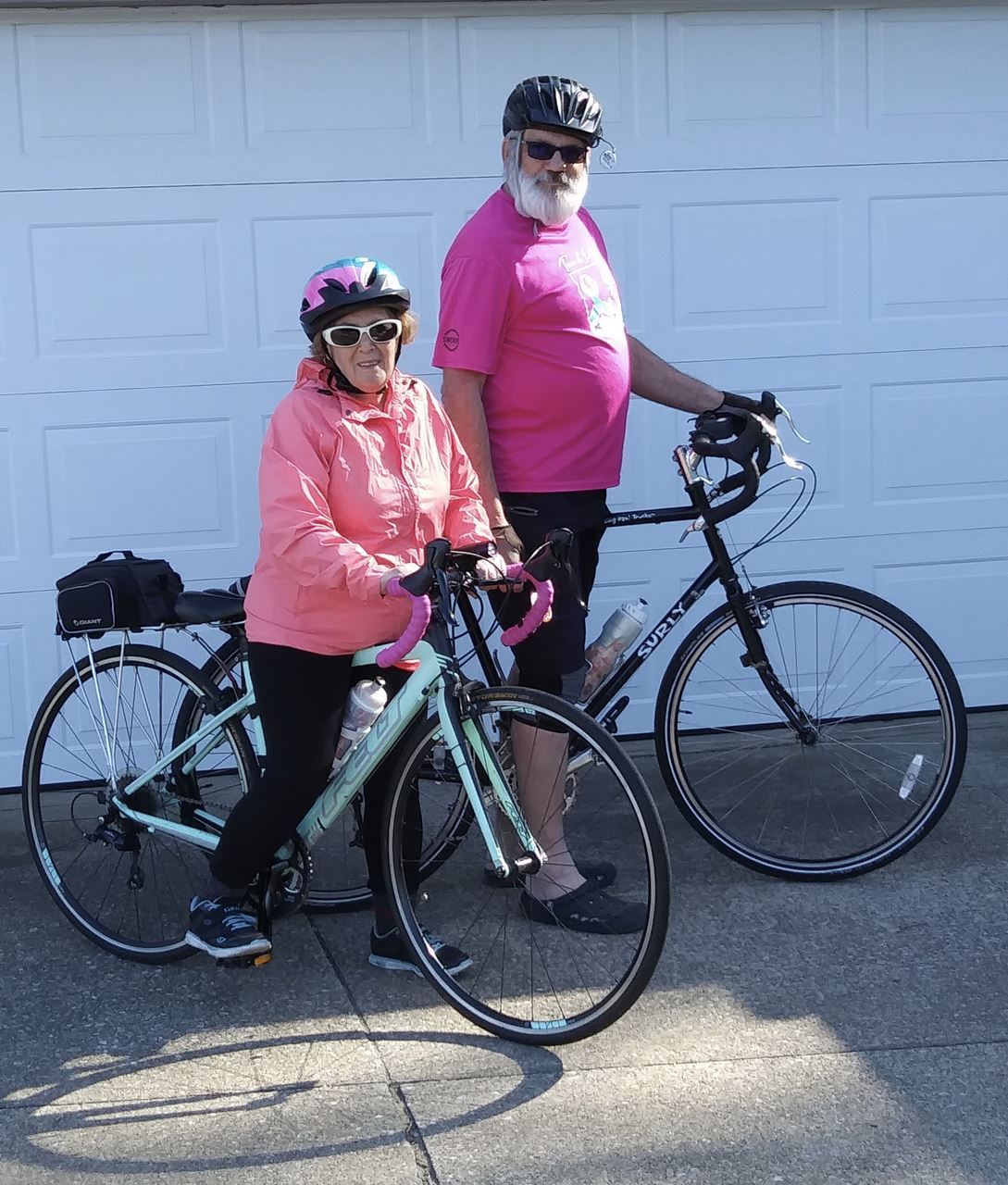Bike Fit
Bike fitting is a very complex issue, involving many parameters. These are some basic suggestions in this article, but your local bike shop can provide more in depth information if needed. To simplify, we will address three basic fitting characteristics: height, length, and width.
First, look at our highly paid Silver Wheels Bicycle Fit Models demonstrating two poor bike fit choices. If your knees hit your chin on the upstroke or you need a step stool to climb onto your bike, please read this entire article. Twice. Then go see Joe at Swerve.
.jpg)
.jpg)
Road bikes can come in both standard (S, M, L) sizes and numerical sizes. The same size across different brands can fit very differently and the number may not correlate to a common measurement. You might ride a size 54cm Cannondale road bike, but a size 54cm Diamondback road bike may feel quite different. Even though we use inches to measure height and inseam in the U.S., road bike sizes are always given in centimeters.
It's easy to find out what size road bike fits you best. All you need to know is the length of your inseam and how tall you are. The chart below will take care of the rest. In some cases, you may find that your height and weight don't align with a single road bike size. If that's the case, go with your inseam measurement as it's the more reliable of the two factors.
Determining Your Road Bike Frame Size

Watch this video to see the basics of a bike fitting. Following the clip are a few of the ideas written up for your reference.
Height
Bike Frame Standover Height:
First, make sure you can straddle your bike with your feet flat on the floor. Be sure to wear your cycling shoes when evaluating standover height, since they add to your overall leg length.
If the bike has a traditional straight top tube that is parallel to the ground, you should have approximately 1" of clearance between the ground and tires when you lift the bike as you’re straddling it.
If the bike has a sloping top tube (semi-compact or compact design) expect to have clearance of 2" or more. Both men’s and women’s bikes can have compact frames.
Bike Seat (Saddle) Height:
With a correct seat height and position, you have the best chance of pedaling efficiently and powerfully using your major leg muscles. To check your seat position, ask a friend to hold the bike upright while you hop on the saddle.
Proper position: With your foot at the bottom of the pedal stroke, you should see a slight bend in the leg, reaching about 80-90 percent of full leg extension.
To adjust the seat height, loosen the quick-release lever on the seatpost (or use a wrench if there’s a binder bolt) and raise or lower the post as needed. Be careful not to raise the post beyond the "minimum insertion mark" etched into its side. (If you need to change the seat height that dramatically, you may need a different frame size.) Retighten the quick-release lever or binder bolt before riding.
Your knee should be in-line with the pedal axle. Proper position: When your right foot is at the 3 o’clock position of the pedal stroke, your knee should be aligned over your forefoot. A plumb line dropped from the bottom of your kneecap should fall straight to the ball of your foot and through the center of the pedal. In this position, your shin will be tilted forward slightly.
To make adjustments in the fore/aft positon of the saddle, loosen the saddle binder bolt (sometimes called the seat fixing bolt) and slide the saddle forward or backward as needed. As you become more experienced you may find you like to position your saddle a little differently.
Now check your saddle tilt. With few exceptions, the saddle should be parallel to the ground. To make saddle tilt adjustments, simply loosen the saddle binder bolt (or bolts) at the top of your seatpost (directly underneath your saddle) and adjust as needed.(Note: The saddle binder bolt is different from the seatpost binder bolt.) Retighten the saddle bolt(s) before riding.
Length
Bike Fitting: Upper Body Position
Bike tube length: For a bike to fit well, simply knowing your standover height may not be enough to ensure a great fit. A good second piece of data is the effective top tube (ETT) length. ETT describes the horizontal distance between the head tube and the seat tube, regardless of whether you have a straight top tube or one that slopes. A quick assessment is to put the index finger on the center of the headset and the elbow should reach the tip of the seat. Some fore/aft seat adjustments will correct this length.
Proper position: Aim for a riding position that gives you a modest amount of shock-absorbing bend in your arms without forcing you to reach too far to apply the brakes. If it feels as though you could comfortably play piano keys on your handlebar, your arms are in a good position. For road bikes, your torso will form a 45-degree angle with your hips, and a 90-degree angle with your arms.
Width
Handlebars width should match shoulder width. Women often have proportionately narrower shoulders and longer legs compared to their torsos than men, and women-specific bikes are designed to meet these needs. Women’s bikes often have narrower handlebars and shorter or more compact frame dimensions. Some women find that men’s bikes fit well and are comfortable, but women-specific bikes may provide a more precise fit for some.
Conclusion
Having a bike that fits you properly with the seat adjusted correctly will go a long way in helping you enjoy your ride and preventing joint aches and pains. If there is still an issue or questions, consult your local bike shop.
Hey, look! Our Bike Models read this article twice and are now on properly fitted bikes so they can enjoy their next bike ride with Silver Wheels!

